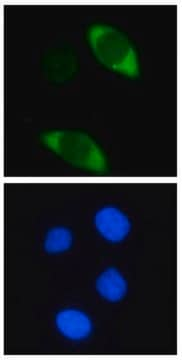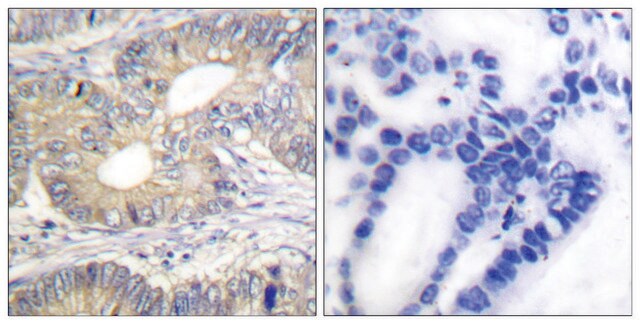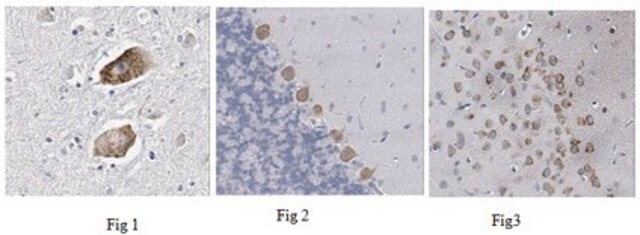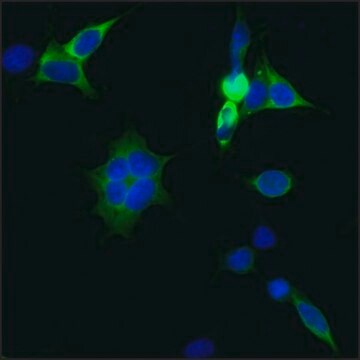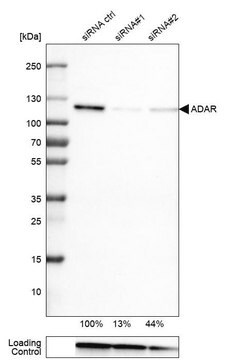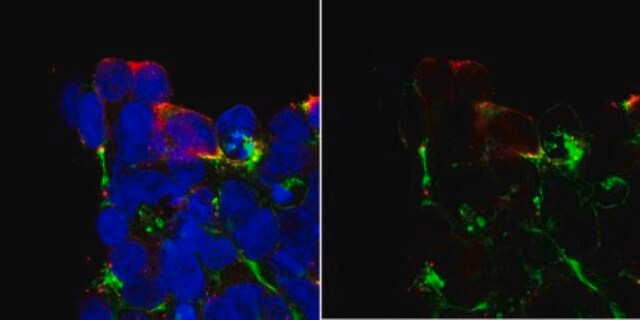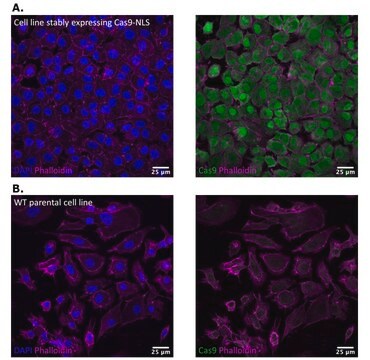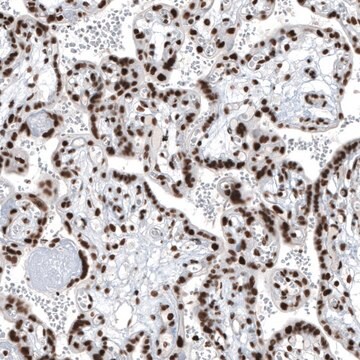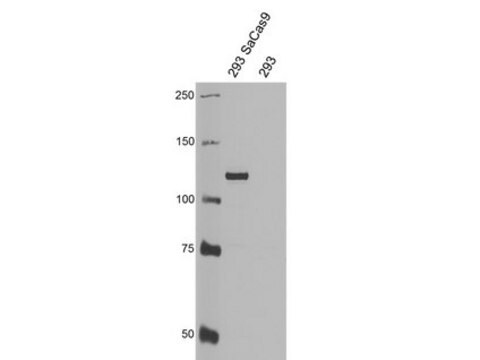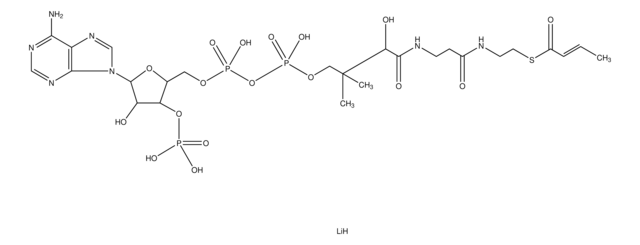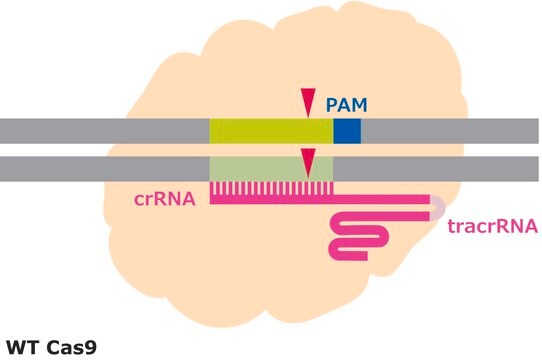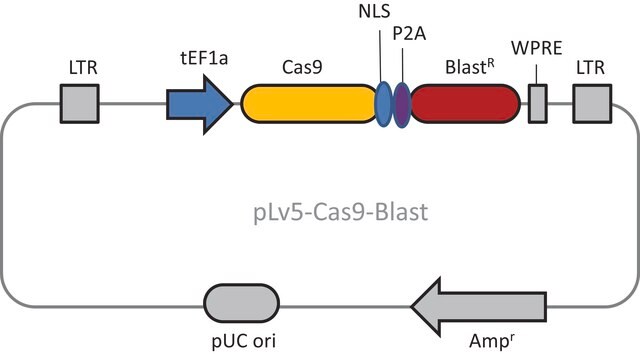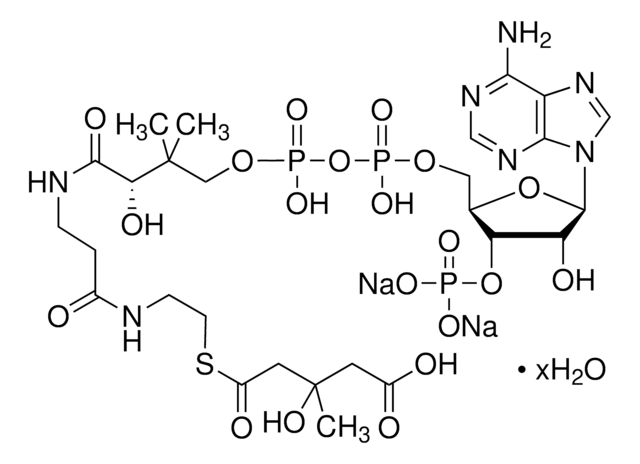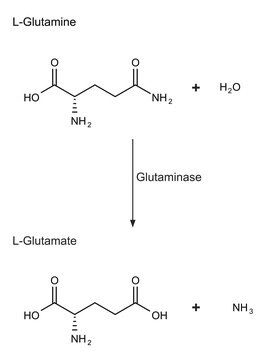SAB4200701
Anti-CRISPR/Cas9 antibody, Mouse monoclonal
clone 7A9-3A3, purified from hybridoma cell culture
Synonym(s):
CRISPR-associated protein-9 nuclease, Crisper, Crispr RNA
About This Item
Recommended Products
biological source
mouse
Quality Level
antibody form
purified from hybridoma cell culture
antibody product type
primary antibodies
clone
7A9-3A3, monoclonal
form
buffered aqueous solution
packaging
antibody small pack of 25 μL
concentration
~1 mg/mL
technique(s)
immunoblotting: 1-2 μg/mL using whole extracts of human HEK-293T cells over-expressing CAS9 protein
immunofluorescence: 1-2 μg/mL using human HEK-293T cells over-expressing CAS9 protein.
immunoprecipitation (IP): 5-10 μg using whole extract of human HEK-293T cells over-expressing CAS9 protein
isotype
IgG1
shipped in
dry ice
storage temp.
−20°C
target post-translational modification
unmodified
General description
The Cas9 endonuclease can be engineered with a single gRNA, directing a DNA double-strand break (DSB) at a desired genomic location. Similar to DSBs induced by zinc finger nucleases (ZFNs), the cell then activates endogenous DNA repair processes, either non-homologous end joining (NHEJ) or homology-directed repair (HDR), to heal the targeted DSB. In comparison to other genome-editing technologies such as designer zinc fingers (ZFs), transcription activator–like effectors (TALEs) and homing meganucleases, the CRISPR/CAS9 system is a scalable, affordable and easy to engineer. Therefore, the anti-CRISPR/CAS9 antibody can be a useful tool for detecting CRISPR/CAS9 positively transfected cells, reveling DSB sites in the genome and in ChIP (Chromatin Immunoprecipitation) related assays.
Immunogen
Application
Biochem/physiol Actions
Physical form
Storage and Stability
Other Notes
In order to obtain best results in different techniques and preparations we recommend determining optimal working concentration by titration test.
Disclaimer
Not finding the right product?
Try our Product Selector Tool.
Storage Class Code
12 - Non Combustible Liquids
WGK
WGK 1
Flash Point(F)
Not applicable
Flash Point(C)
Not applicable
Certificates of Analysis (COA)
Search for Certificates of Analysis (COA) by entering the products Lot/Batch Number. Lot and Batch Numbers can be found on a product’s label following the words ‘Lot’ or ‘Batch’.
Already Own This Product?
Find documentation for the products that you have recently purchased in the Document Library.
Customers Also Viewed
Our team of scientists has experience in all areas of research including Life Science, Material Science, Chemical Synthesis, Chromatography, Analytical and many others.
Contact Technical Service